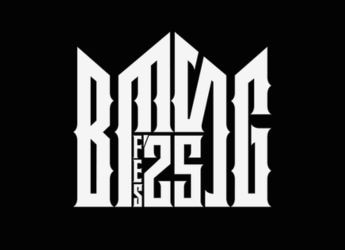- Home
- Science
- Science News
- Partial Solar Eclipse of March 2025: Satellite Images to Show Moon’s Shadow
Partial Solar Eclipse of March 2025: Satellite Images to Show Moon’s Shadow
Satellites will track the March 29, 2025, partial solar eclipse as the moon’s shadow moves across Earth.

Photo Credit: ESA
Partial Solar Eclipse March 2025: Shadow Over North America & Europe Seen from Space
A partial solar eclipse will take place on March 29, 2025. The moon will be passing in front of the sun. It will be visible from Europe, Western Africa, Eastern Canada and the Northeastern United States. From the ground, the sun will appear to have a portion covered by the moon. From space, weather satellites will capture the movement of the moon's shadow across Earth. The eclipse will begin over the Atlantic Ocean, where the darkest part of the shadow will blend into the night side of Earth. In Nunavik, Quebec, the eclipse will reach its maximum, covering 94% of the sun at sunrise.
Satellite Observations of the Eclipse
According to reports, geostationary satellites will record the eclipse as the moon's penumbral shadow moves across Earth. The Copernicus Sentinel-3, Himawari and GOES-16 satellites are expected to capture detailed images. The International Space Station may also document the event, as astronauts aboard have done in the past. The images taken will show the gradual movement of the shadow, which will appear darker in regions where the eclipse is most pronounced.
Movement of the Moon's Shadow
As per NASA's Scientific Visualisation Studio, the moon's shadow will travel from west to east due to the moon's orbital motion. It moves at a speed of 3,700 kilometres per hour, which is faster than Earth's rotation. This causes the shadow to appear to move in the opposite direction of the sun's apparent motion in the sky. The curvature of the Earth also affects the shadow's speed and shape as it moves across different regions.
Viewing the Eclipse from Space
The satellites which are positioned at 36,000 kilometres above the Earth provide the best view of the event. These satellites will be capturing real-time images of the eclipse shadow as it moves. Astronauts aboard the International Space Station may also capture images of the eclipse from orbit.
Get your daily dose of tech news, reviews, and insights, in under 80 characters on Gadgets 360 Turbo. Connect with fellow tech lovers on our Forum. Follow us on X, Facebook, WhatsApp, Threads and Google News for instant updates. Catch all the action on our YouTube channel.
- Samsung Galaxy Unpacked 2025
- ChatGPT
- Redmi Note 14 Pro+
- iPhone 16
- Apple Vision Pro
- Oneplus 12
- OnePlus Nord CE 3 Lite 5G
- iPhone 13
- Xiaomi 14 Pro
- Oppo Find N3
- Tecno Spark Go (2023)
- Realme V30
- Best Phones Under 25000
- Samsung Galaxy S24 Series
- Cryptocurrency
- iQoo 12
- Samsung Galaxy S24 Ultra
- Giottus
- Samsung Galaxy Z Flip 5
- Apple 'Scary Fast'
- Housefull 5
- GoPro Hero 12 Black Review
- Invincible Season 2
- JioGlass
- HD Ready TV
- Laptop Under 50000
- Smartwatch Under 10000
- Latest Mobile Phones
- Compare Phones
- Xiaomi 17 Ultra Leica Edition
- Xiaomi 17 Ultra
- Huawei Nova 15
- Huawei Nova 15 Pro
- Huawei Nova 15 Ultra
- OnePlus 15R
- Realme Narzo 90x 5G
- Realme Narzo 90 5G
- Asus ProArt P16
- MacBook Pro 14-inch (M5, 2025)
- OPPO Pad Air 5
- Huawei MatePad 11.5 (2026)
- Xiaomi Watch 5
- Huawei Watch 10th Anniversary Edition
- Acerpure Nitro Z Series 100-inch QLED TV
- Samsung 43 Inch LED Ultra HD (4K) Smart TV (UA43UE81AFULXL)
- Asus ROG Ally
- Nintendo Switch Lite
- Haier 1.6 Ton 5 Star Inverter Split AC (HSU19G-MZAID5BN-INV)
- Haier 1.6 Ton 5 Star Inverter Split AC (HSU19G-MZAIM5BN-INV)












